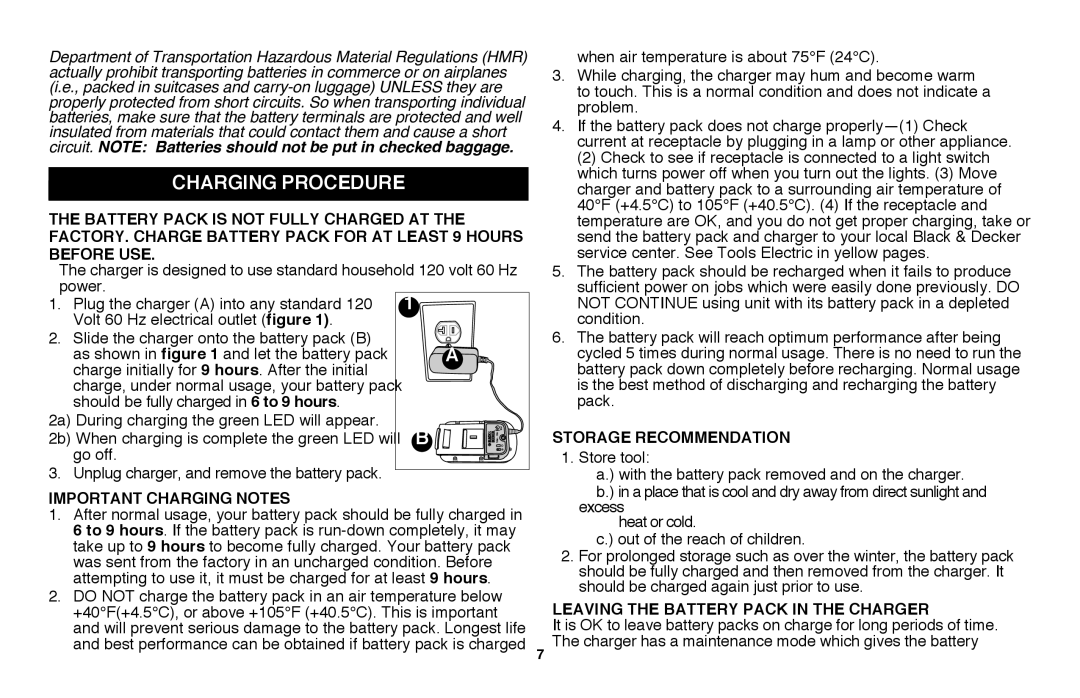
Department of Transportation Hazardous Material Regulations (HMR) actually prohibit transporting batteries in commerce or on airplanes (i.e., packed in suitcases and
Charging Procedure
THE BATTERy PACK is NOT FULLY CHARGED AT THE | |
FACTORY. CHarge battery pack for at least 9 hours | |
before use. |
|
The charger is designed to use standard household 120 volt 60 Hz | |
power. | 1 |
1. Plug the charger (A) into any standard 120 | |
Volt 60 Hz electrical outlet (figure 1). |
|
2. Slide the charger onto the battery pack (B) | A |
as shown in figure 1 and let the battery pack | |
charge initially for 9 hours. After the initial |
|
charge, under normal usage, your battery pack |
|
should be fully charged in 6 to 9 hours. |
|
2a) During charging the green LED will appear. | B |
2b) When charging is complete the green LED will | |
go off. |
|
3. Unplug charger, and remove the battery pack. |
|
Important Charging Notes
1. After normal usage, your battery pack should be fully charged in 6 to 9 hours. If the battery pack is
2. DO NOT charge the battery pack in an air temperature below +40°F(+4.5°C), or above +105°F (+40.5°C). This is important and will prevent serious damage to the battery pack. Longest life and best performance can be obtained if battery pack is charged
when air temperature is about 75°F (24°C).
3. While charging, the charger may hum and become warm to touch. This is a normal condition and does not indicate a problem.
4. If the battery pack does not charge
(2) Check to see if receptacle is connected to a light switch which turns power off when you turn out the lights. (3) Move charger and battery pack to a surrounding air temperature of 40°F (+4.5°C) to 105°F (+40.5°C). (4) If the receptacle and temperature are ok, and you do not get proper charging, take or send the battery pack and charger to your local Black & Decker service center. See Tools Electric in yellow pages.
5. The battery pack should be recharged when it fails to produce sufficient power on jobs which were easily done previously. DO NOT CONTINUE using unit with its battery pack in a depleted condition.
6. The battery pack will reach optimum performance after being cycled 5 times during normal usage. There is no need to run the battery pack down completely before recharging. Normal usage is the best method of discharging and recharging the battery pack.
Storage Recommendation
1. Store tool:
a.) with the battery pack removed and on the charger. b.) in a place that is cool and dry away from direct sunlight and
excess
heat or cold.
c.) out of the reach of children.
2. For prolonged storage such as over the winter, the battery pack should be fully charged and then removed from the charger. It should be charged again just prior to use.
Leaving the Battery Pack in the Charger
It is OK to leave battery packs on charge for long periods of time.
7 The charger has a maintenance mode which gives the battery
